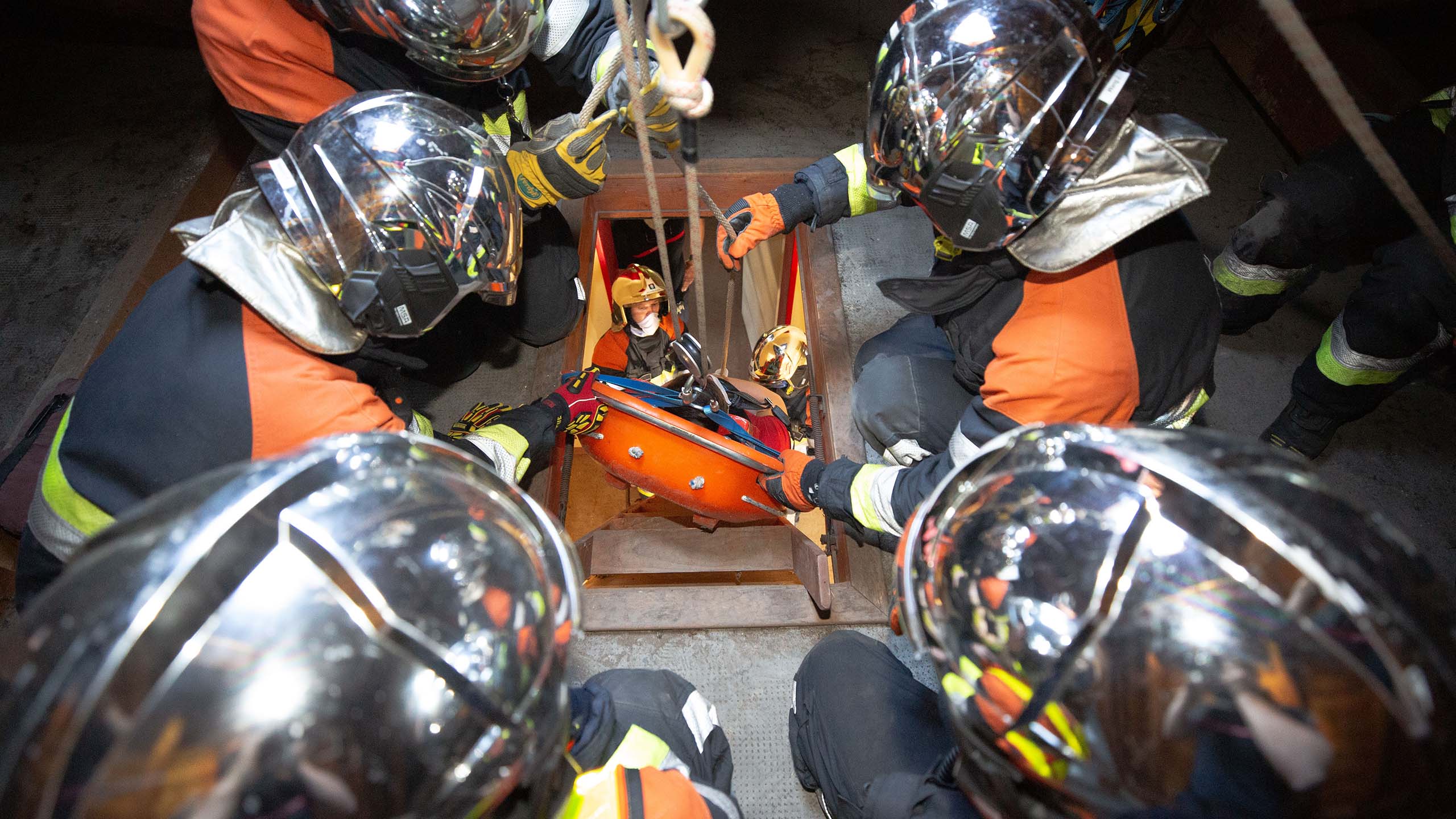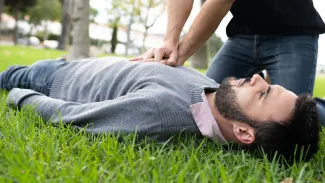Creation date : 01/09/2020
Call 112

Cédric Gantzer is head of department within the Grand Ducal Fire and Rescue Corps (CGDIS), which covers firefighters, the ambulance service and the SAMU emergency medical service.
For him, the first thing to do is call for help.
“This may seem obvious but, in a multinational country such as Luxembourg, finding the contact number is already a first stumbling block for many, as they automatically think of the numbers that are used in their country of origin. In Luxembourg, as in all of Europe, in the event of an accident, you only have to remember one number: 112”.
Calling the emergency services as soon as possible is essential. This can really make a vital difference.
Basic first aid
An accident can happen at any time. Even a stone’s throw from your home…
Choking

Nadège is an events organiser. One day, she was attending a cocktail she had organized and picked up a mini-skewer from the buffet. Suddenly, she couldn’t breathe. A piece had got stuck in her trachea. She started to wave her arms and the crowd around her started to panic, but a young waiter saw what was happening, put his arms around her from behind and performed the Heimlich manoeuvre. A few seconds later, the piece of meat was unlodged and expelled. Without quick thinking by this young man, she could have lost her life.
Cédric Gantzer confirms that Nadège was very lucky: “When it comes to episodes of choking, rapid action is of the essence. The first instinct should be to give a few blows to the back to try to make the victim cough. This should be followed by abdominal thrusts, the so-called Heimlich manoeuvre”.
Loss of consciousness

Melanie was away on a weekend with college girlfriends. Suddenly, one of them said that she was blacking out and collapsed to the ground. They called for help, placed their friend in the recovery position and waited about ten minutes before the emergency services reached their country cottage. During this wait, none of them knew what to do. The young woman fortunately regained consciousness shortly after the arrival of the emergency services. More shaken than hurt. But Melanie decided that day to go on a first aid course to never experience this feeling of helplessness again.
For Cédric Gantzer, they had the right reaction. “Loss of consciousness can have several causes: fainting, diabetes… so, the first reflex is to call for help. The person on the line will take you though the first diagnosis. By applying the stroke detection protocol, for example”.
Cardiac arrest

“In the event of a cardiac arrest, every minute without help cuts the chance of survival by 10%,” explains Cédric Gantzer.
During a game of tennis with friends, you see someone lose consciousness and stop breathing. Call the emergency services (112) or ask someone else to do so. Perform a heart massage until the emergency services arrive. If you have a defibrillator nearby, the tool will help you make a diagnosis to react as quickly as possible either by performing a cardiac massage or by administrating an electric shock.
A decision that needs you to keep calm, which is easier said than done if you’ve never done this before… That’s why Cédric Gantzer **recommends that everyone learn basic first aid to know how to react in case of heart failure and learn how to handle a defibrillator.
A life-saving skill
Do you want to know how to respond in the event of an accident? And be able to come to the aid of those around you: your family, your loved ones, your community… the CGDIS organises different levels of training for the general public.
First aid courses

Burns, wounds, heart attacks, road traffic accidents are all situations covered by the first aid course organised by the CGDIS. 16 hours of free training, available in Luxembourgish, German, French, English and offered in 40 towns around the country. With a choice of modules.
Volunteer firefighters
In addition to the essential role of every citizen, volunteer firefighters are one of the pillars of the emergency services. Luxembourg has 4,000 of them, who are on call from their homes or in fire stations. A flexible way of giving your time that takes into account your lifestyle.

“The help of volunteer firefighters was crucial during the floods in summer 2021. Rescuing people carried away by the water, rehousing, clean-up… this backup was valuable at a time when all our response teams were already mobilized,” explains Cédric Gantzer.
And because it’s never too early to learn, in Luxembourg , firefighters offer children between the ages of 6 and 15 a chance to discover this profession for a few hours a week. Handling extinction tools, responding to a medical emergency... children also have the opportunity to pass their first aid certificates. A basic training that will allow them to become operational as a volunteer fire-fighter from the age of 16, joining the ranks of young firefighters of the CGDIS if they wish.
From the age of 18, after undergoing solid training, volunteer firefighters are operational to respond in case of fire or medical emergency. More information here.
An advisor is available in every region of the Grand Duchy to offer you his services and his well-informed advice about insurance solutions : Do you need advice ?










